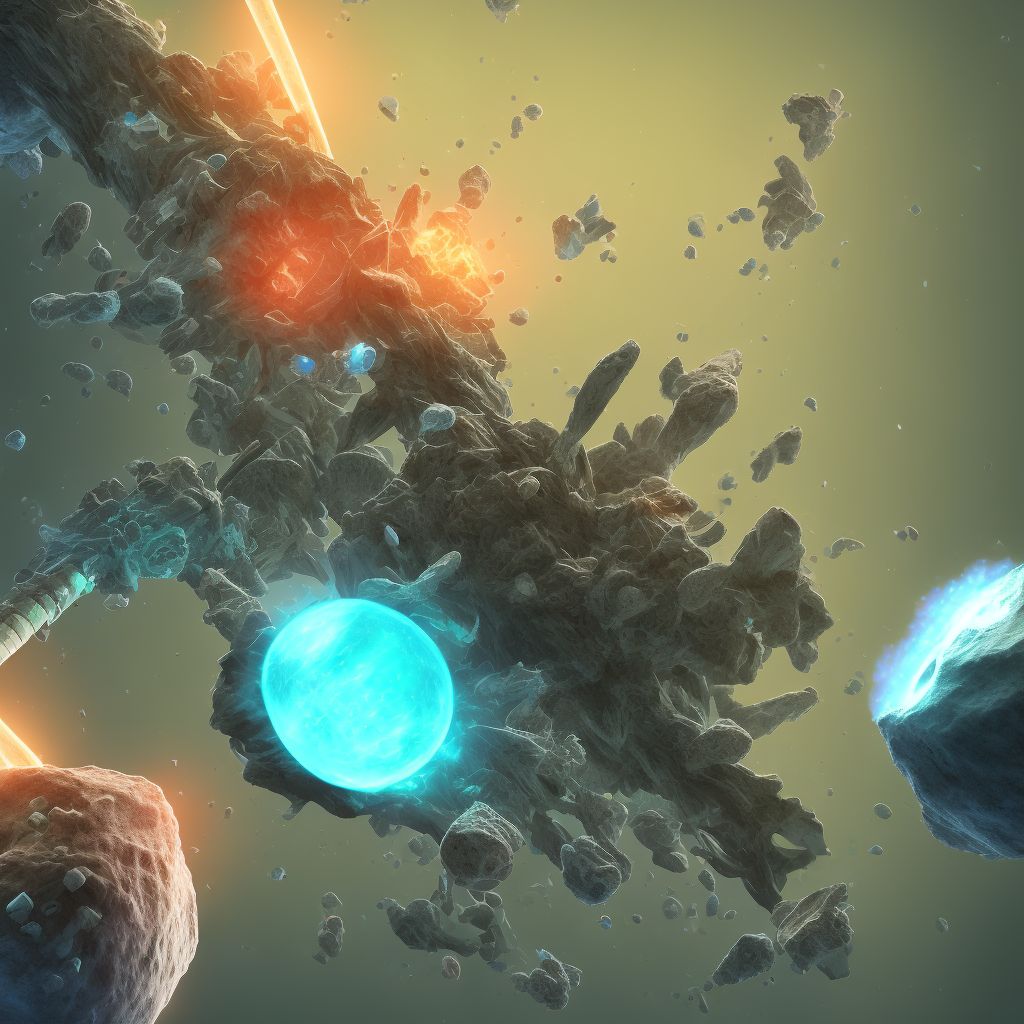
Nondisplaced segmental fracture of shaft of left tibia, subsequent encounter for open fracture type I or II with malunion Save
ICD-10 code: S82.265Q
Disease category: S82.265: Nondisplaced segmental fracture of shaft of left tibia
Nondisplaced Segmental Fracture of Shaft of Left Tibia: Understanding Malunion
A nondisplaced segmental fracture of the shaft of the left tibia refers to a specific type of bone injury that occurs in the lower leg. This condition can lead to various complications, including malunion, which is the improper healing of the fractured bone.
When a nondisplaced segmental fracture occurs, the bone breaks into two or more pieces, but the fragments remain aligned. While this type of fracture is less severe than a displaced fracture, it can still result in long-term issues if not properly treated.
Malunion is a potential complication that can occur during the healing process of a fractured bone. It refers to the improper alignment or angulation of the fractured fragments, leading to a misaligned union. In the case of a nondisplaced segmental fracture of the shaft of the left tibia, malunion can occur during the subsequent encounter for an open fracture type I or II.
Malunion can cause functional impairments, such as limited range of motion, joint instability, and gait abnormalities. Additionally, it may lead to chronic pain, deformity, and reduced quality of life for the patient.
To prevent malunion, it is crucial to receive appropriate medical care and follow the recommended treatment plan. Orthopedic specialists will assess the fracture, considering factors such as fracture type, displacement, and the extent of malunion. They may use X-rays, CT scans, or other imaging techniques to evaluate the condition accurately.
Once the diagnosis is confirmed, healthcare professionals will develop a comprehensive treatment plan tailored to the individual's needs. This may involve surgical intervention, such as open reduction and internal fixation, to realign the fractured fragments and promote proper healing.
- Understanding nondisplaced segmental fractures of the shaft of the left tibia
- Exploring the complications of malunion
- Importance of seeking appropriate medical care
- Diagnostic procedures for assessing the fracture
- Treatment options for preventing malunion
In conclusion, a nondisplaced segmental fracture of the shaft of the left tibia can lead to complications like malunion if not properly managed. Seeking timely medical attention and adhering to the recommended treatment plan is crucial to prevent long-term issues. If you suspect a fracture or have concerns about your bone health, consult with a healthcare professional for proper evaluation and guidance.
Treatment of Nondisplaced segmental fracture of shaft of left tibia, subsequent encounter for open fracture type I or II with malunion:
Treatment Options for Nondisplaced Segmental Fracture of Shaft of Left Tibia, Subsequent Encounter for Open Fracture Type I or II with Malunion
A nondisplaced segmental fracture of the shaft of the left tibia, subsequent encounter for open fracture type I or II with malunion can be a challenging condition to treat. In such cases, it is crucial to consider various treatment options ...
To see full information about treatment please Sign up or Log in